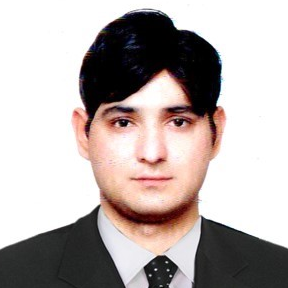Surface Water Pollution and Quality Assessment, Monitoring and Modelling
A special issue of Pollutants (ISSN 2673-4672). This special issue belongs to the section "Water Pollution".
Deadline for manuscript submissions: closed (31 July 2023) | Viewed by 3684
Special Issue Editors
Interests: transboundary river basin management; hydrological modelling; remote sensing; precision agriculture
Special Issues, Collections and Topics in MDPI journals
2. Department of Biological and Agricultural Engineering, University of California, Davis, CA 95616, USA
3. Department of Agricultural and Biological Engineering, University of Florida, Gainesville, FL 32611, USA
Interests: water pollutionl; water quality; sewage treatment; wastewater reuse in agriculture; environmental pollution; air quality; climate change; soil pollution; agriculture waste; environmental monitoring; remote surveillance
Special Issues, Collections and Topics in MDPI journals
2. School of civil Engineering, MCE, National University of Sciences and Technology (NUST), Islamabad, Pakistan
Interests: surface pollution; river water quality; ocean and coastal water quality; remote sensing of environmental pollution; pollutant; GIS mapping of pollutants; risk; subsurface pollution; water quality modeling; climate change and water pollution
Special Issue Information
Dear Colleagues,
Water is the most vital resource on the planet. The availability and quality of fresh water for drinking are burning issues due to growing world population. On the other hand, extensive use of water resources for humankind activities increases water pollution, and a huge quantity of wastewater is being generated. The wastewater ultimately goes into nearby drains and finally discharges into the sea, rivers, canals or lakes through networks of drains without treatment, which pollutes the global water system. There are many water pollution management strategies to cope with the water contamination on a large scale by adopting separate drainage systems for household, industrial effluents and agriculture. Therefore, surface water pollution is becoming problematic worldwide. However, the timely assessment and monitoring of the water resources (i.e., rivers, canals, lakes, and water bodies) can help to control the water pollution and improve the quality of water bodies globally. In this Special Issue, we invite authors to share their research on a wide range of surface water quality research (experimental–laboratory, pilot, or actual-scale) and analysis methods.
Potential topics include, but are not limited to:
- Water pollution.
- Surface water quality assessment and monitoring.
- Surface water quality modeling.
- Application of remote sensing for water quality monitoring.
- Recovery monitoring.
- Impacts of climate change on water quality.
- Impact of COVID-19 on water quality.
- Eutrophication and red tides.
- Real-time sensor-based water quality monitoring .
- Monitoring and evaluation for ecosystems.
- Wastewater recycling and reuse.
- Waterborne pathogens.
- Monitoring of algal blooms and phytoplankton.
- Remote sensing of water environment.
- Coastal and ocean water pollution.
- Microplastics impact on freshwater bodies.
Dr. Muhammad Jehanzeb Masud Cheema
Dr. Saddam Hussain
Dr. Muhammad Mazhar Iqbal
Guest Editors
Manuscript Submission Information
Manuscripts should be submitted online at www.mdpi.com by registering and logging in to this website. Once you are registered, click here to go to the submission form. Manuscripts can be submitted until the deadline. All submissions that pass pre-check are peer-reviewed. Accepted papers will be published continuously in the journal (as soon as accepted) and will be listed together on the special issue website. Research articles, review articles as well as short communications are invited. For planned papers, a title and short abstract (about 100 words) can be sent to the Editorial Office for announcement on this website.
Submitted manuscripts should not have been published previously, nor be under consideration for publication elsewhere (except conference proceedings papers). All manuscripts are thoroughly refereed through a single-blind peer-review process. A guide for authors and other relevant information for submission of manuscripts is available on the Instructions for Authors page. Pollutants is an international peer-reviewed open access quarterly journal published by MDPI.
Please visit the Instructions for Authors page before submitting a manuscript. The Article Processing Charge (APC) for publication in this open access journal is 1000 CHF (Swiss Francs). Submitted papers should be well formatted and use good English. Authors may use MDPI's English editing service prior to publication or during author revisions.
Keywords
- water pollution
- water quality
- climate change
- risk assessment
- wastewater treatment
- water monitoring
- freshwater





